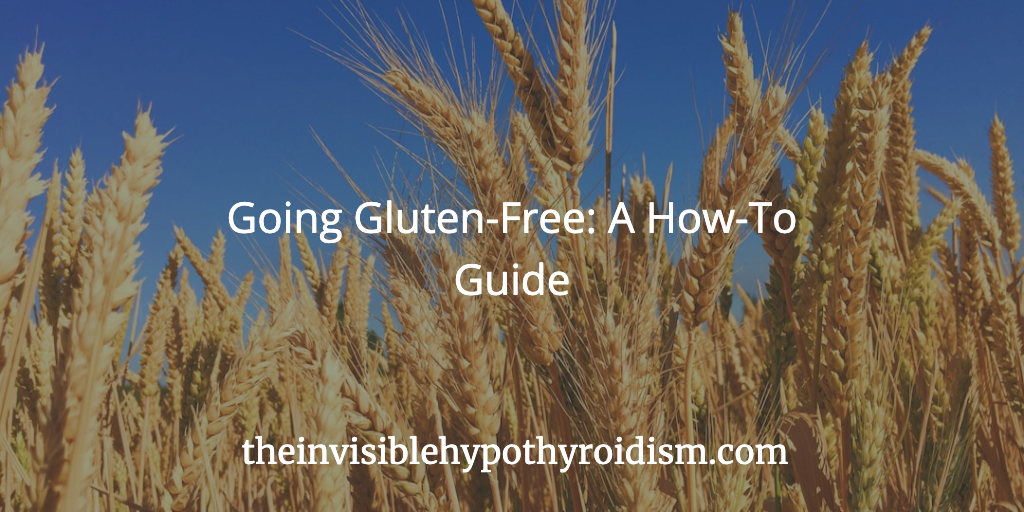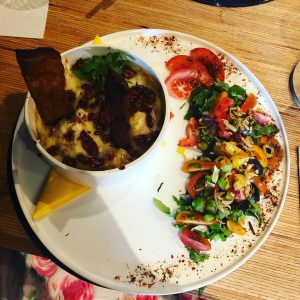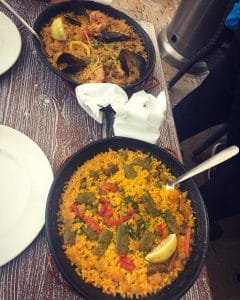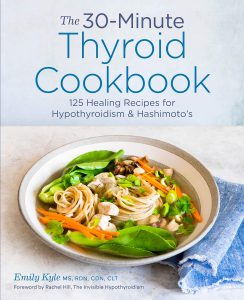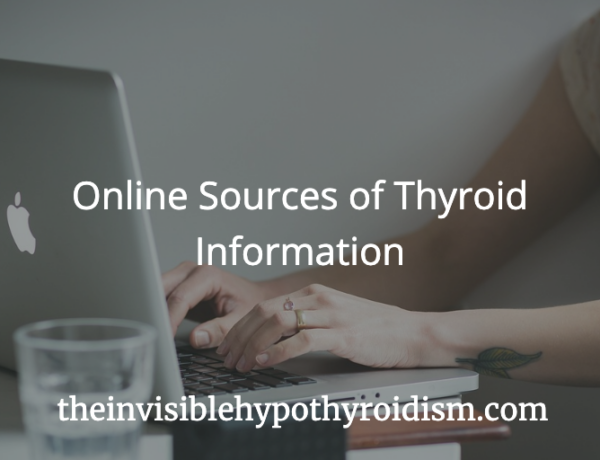Originally published on 30th November 2016 Last updated on 8th April 2024
Going gluten-free can be daunting and scary. It can seem like a lot of effort and you may even think it will constrict what you can eat considerably.
Whether you’re thinking of going gluten-free for reasons such as having the autoimmune disease Hashimoto’s Thyroiditis, as gluten can aggravate this, or whether you feel it causes you stomach issues or other problems after testing positive or negative for Coeliac disease, I hope this guide on going gluten-free helps you.
It includes everything I can think of sharing from my own experience of adapting to a gluten-free diet!
Read about the thyroid symptoms that disappeared for me after I went gluten-free here.
As of 2024, NICE Guidelines recommend that all autoimmune thyroid patients (those with Graves’ or Hashimoto’s) are screen for coeliac disease at diagnosis. Most people with hypothyroidism also have Hashimoto’s (as the cause) so this is important. Research shows that people with coeliac disease have a 1.5% to 3.8% chance of developing autoimmune thyroid disease, so there is a big correlation between the two conditions. If you test negative but develop possible symptoms at a later date, it is recommended you be screened again, as you can develop it at any time.
First of all, know that this is all going to be OK!
You will get the hang of this. Take it from a total foodie who is always munching on something and never stops thinking about food…
I’m willing to admit that my life revolves around food a fair bit because my family and I love it so much. I’m thinking about dinner when I’m eating my lunch and much of my hobbies and social life revolve around food. I’m that annoying person on your Facebook, Snapchat and Instagram who takes photos of their food and hot chocolate…
But you know what? I’m gluten-free and I’m not finding it difficult.. Anymore.
That ‘anymore’ is very important.
I did indeed find it difficult and frustrating at first, but not anymore!
Where To Start?
OK, let’s start with what you should avoid.
On a gluten-free diet, you should avoid any foods that contain: gluten, wheat, oats (unless they’re gluten-free oats), barley, rye, spelt and malt.
You’ll probably be surprised at just how much food contains these things, such as some chocolate bars, alcohol, sauces, vinegar and condiments. The obvious foods that contain them are bread, pasta, pizza, biscuits, cake and porridge.
You’ll need to adopt a strict behaviour of checking every single thing you eat and drink (although drinks are typically less likely to contain gluten). Every ingredients label, everything you eat at a restaurant or even a family member’s or friend’s house needs to be inspected, so adopt a behaviour that is confident and assertive. If any meal, food or drink you are presented with contains gluten, wheat, oats (unless they’re gluten free oats), barley, rye, spelt or malt, you cannot eat it.
It Gets Easier
As time goes on, you’ll realise the typical culprits that contain gluten, so eating out and around a friend’s house will become easier. For example, I tend to default to meat, vegetables and salad dishes when out as they are naturally free from gluten, but you can ask the restaurant for their gluten-free menu or they will point out the gluten-free options on the regular menu. They are legally obliged to have this information handy and for it to be accurate and up to date, so you’re not causing them any trouble. This is something they must already have.
Takeaway Food
The same goes for takeaways. You’ll find that this is probably the hardest with gluten-free options. Many do not offer their allergen information online, so you’ll need to call the restaurant directly and ask them to make sure there is no gluten in the items you’re thinking of ordering. Also check they’re prepared and cooked separately to avoid cross contamination. If you don’t trust them or they sound unsure, don’t risk it. It’s not worth feeling ill!
What I’ve Found with Takeaways:
Pizza/Italian – Very rarely safe. Ask if they have gluten-free pizza bases, if all toppings are gluten-free and if they’re cooked in separate ovens and prepared on separate work spaces. Ask if they have gluten-free pasta and if sauces contain gluten. I’ve not found it common practise to get gluten free items from Italian restaurants. If they have risotto, then this is often safe, but please check with the waiter or chef.
When I visited Italy, however, gluten-free food was in abundance.
Indian – One of my favourites because of how simple it is! Most starters, such as samosas for example, contain gluten, but most main meals should be fine. Most Indian curries use milk over wheat to thicken sauces, but do double check. Rice should be fine. Poppadoms are usually gluten free, but naan bread contains gluten so isn’t appropriate. On the whole, I always eat well as a gluten-freebie at an Indian restaurant.
Chinese – Most sauces appear to contain wheat or soy sauce to thicken them up and noodles use wheat flour, too. I find Chinese food impossible for gluten-free eating unfortunately.
Thai – Seems mixed. I spent a week in Thailand for my honeymoon and found it pretty tricky to eat there. Most main meals appear to use milk over wheat flour to thicken sauces, but they do also use a lot of soy sauce which contains wheat. Double check with the chef. Like Indian restaurants, starters often contain gluten.
You can ask them to switch wheat noddles to rice noodles and omit any soy sauce.
Vietnamese – Probably my favourite, is Vietnamese food for a gluten-free diet. I spent a week in Vietnam for my honeymoon and never had to worry about gluten. They’re the number one exporter of rice, so rice noodles, rice flour and basic ingredients are used a lot. Worth asking if they include glutenous soy sauce in meals but they usually don’t.
French – Crepes are usually made using wheat flour but many places are now offering gluten-free crepes. French cuisine is big on salad, meat and vegetable dishes so on the whole should be quite safe, but pay attention to sauces and dressings.
Mexican – Soft tortillas tend to contain gluten, but tacos tend to be gluten-free, using cornflour. Check sauces for gluten!
Fish and Chips – In the UK, getting fish and chips from the ‘chip shop’ is a real treat, but unfortunately, most places use the same oil for frying everything. Meaning that even the chips, which are usually fine themselves, get glutened. Check the local places in your area and ask them how they cook the food.
Cross Contamination – Eating Out
Another thing you’ll want to factor in when eating out (take-aways, restaurant, at a friend’s house) is how food is prepared.
Cross contamination means that your gluten-free meals are prepared on surfaces and in the same pots as gluten-containing food, e.g. chips or fries that are naturally gluten free, being fried in the same oil as onion rings (gluten alert!) which contaminates them.
They may also be using the same surface to prepare regular burgers and gluten-free burgers. Generally, I ask when I order food if it is prepared separately to gluten-containing foods, and if it is cooked or fried separately to anything else altogether e.g. no shared oil or equipment. I find that this is rather evenly split, so often, I cannot have chips for example, but I’ve learned to live without them… mostly!
On a gluten-free diet, it’s important not to eat any foods cross contaminated with other gluten-containing food.
Cross Contamination – At Home
The easiest way to control cross contamination is by eating and preparing as much food at home as you can, because then you’re in control. You’ll need to bear in mind that if you live with someone who does eat gluten, then separate cooking equipment will be needed, e.g. separate toasters for bread and separate utensils such as wooden spoons, and wooden chopping boards, which can hold on to gluten, will be needed.
In my house, we have our own toasters, and we mark the wooden spoons, to show which have been used in gluten-containing foods and which are safe and free of gluten. When we’re making dinner, we have to be careful not to mix up things, like for instance, when we make spaghetti bolognese; I have gluten free spaghetti but my other half has regular spaghetti. So we cook both separately, using separate utensils as well, and only taste-test our own to check when they’re cooked. We have to be on the ball!
Work surfaces are cleaned regularly and thoroughly, too, to avoid any glutenous crumbs of bread getting on to my gluten-free bread.
Gluten-Free Cookbooks
Make cooking at home easy peasy with these cookbooks:

The Gluten-Free Cheat Sheet: Go G-Free in 30 Days or Less
The 30-Minute Thyroid Cookbook: 125 Healing Recipes for Hypothyroidism and Hashimoto’s
NOSH Gluten-Free: A No-Fuss, Everyday Gluten-Free Cookbook
Reading Products
Reading ingredient labels in supermarkets is crucial. You’ll find that a lot of them list gluten, wheat, oats, barley, rye, spelt or malt, in bold to make it clear on the packaging, and many companies are now starting to label products ‘gluten-free’ on the front, to make it even easier and more attractive to confused shoppers.
Until you’re familiar with what you’re looking for on labels and ingredient lists, I would write down “gluten, wheat, oats (unless gluten-free oats), barley, rye, spelt and malt” on a sheet of paper or note in your phone, and take it with you to the store. Check everything you buy to see if it contains any of these and after a shop or two, you’ll know them off by heart.
Gluten-Free Alternatives
It’s important to know also that most foods are available as gluten-free alternatives and the quality of these are getting better. I have been able to find gluten-free versions of pretty much everything.
However, a lot of gluten-free products (such as cake, bread and biscuits) contain a lot of sugar and can actually be pretty unhealthy. They’re also typically more expensive. Due to the lack of desired taste, texture or look in gluten-free products, companies often pump them full of sugar and other not-so-good things to compensate, so you may want to limit your consumption of gluten-free labelled products to just treats.
For example, gluten-free cake, sausage rolls, pizza bases and pasta can be significantly more sugary than their gluten-filled counterparts. We can use naturally gluten-free alternatives where we can, such as rice noodles over egg noodles for example, or by baking your own cakes and pizza from scratch, so you can control the ingredients. It’s actually quite fun experimenting with this, too. There are lots of recipes online nowadays as well in the cookbooks listed above.
One thing I have discovered and find incredibly interesting, is that better quality and more expensive products tend to naturally be gluten-free. Sausages for example. In my local supermarket, the own brand chilled sausages contain wheat (gluten), but the more expensive, ‘butcher’s selection’ ones do not.
Another is Bisto gravy. Their regular gravy granules, just like all other brands, contain gluten, but their ‘Bisto Best‘ version does not! If you think about what that’s saying about wheat as an ingredient, it gives you a lot to think about…
What’s The Deal with Oats?
Pure oatmeal (oats) are naturally gluten-free, however, many oats are contaminated due to being processed in facilities that also process wheat, barley, and rye (which obviously contain gluten).
Any oats that you eat, including those used in products such as flapjacks, must be labelled gluten-free to be safe for you to eat.
However, some people can still react or be sensitive to gluten-free oats, too. So they choose to avoid all oats.
What About Alcohol?
Typically, cider, wine, sherry, spirits, port and liqueurs tend to be gluten-free, but do check the specific brand and label, or check up their ingredients online.
With alcohol, some people following a gluten-free diet can get confused because gluten containing cereals are often used in making alcohol, but the gluten is removed when it is distilled. All spirits are distilled, therefore this process removes any trace of gluten from the drink. So all spirit drinks (including malt whisky which is made from barley) are safe for gluten-free people to consume.
However, some coeliacs report having symptoms of gluten consumption when drinking spirits still, even though they’ve been distilled. So this has been debated.
Alcohol to definitely avoid includes beer, lager, stout and ale, which contain varying amounts of gluten and are not suitable for a gluten-free diet, but also any spirits or other alcoholic drinks that are flavoured using things like malt.
I would always check out the ingredients, online if you have to, to check whether a drink is gluten-free or not.
Specially manufactured gluten-free beers, lagers and ales are available in many shops now.
Medicine and Supplements
Gluten often appears in some medicine and supplements, so ensure you’re not taking in any gluten from those either. Talk to your doctor or pharmacist about alternatives if you are.
So, I Can Ease This in, Right?
So you’re feeling clued up on a gluten-free diet and ready to go, but want to slowly integrate going gluten-free in to your life. Whilst this may mean that you get to indulge in gluten-filled foods for a while longer and use up the supplies in your cupboards, bear in mind that any gluten-free foods you do eat in the mean time will be pretty pointless.
You are either gluten-free or you’re not.
Eating any amount of gluten, whether once a week or every day, is doing damage to you internally if you have a sensitivity or intolerance, so eating even a small amount can cause issues. For those who experience Coeliac disease, damage to the surface of the small bowel (intestines) occurs every time that gluten is consumed.
So whilst you may think it’s a good idea to ease in the gluten-free food, it’s actually quite pointless and expensive. You’re buying more expensive gluten-free food, only for it to be not having much of a benefit since you’re eating other gluten containing foods anyway.
Have you tried going gluten-free? Has it helped?
And an important note: as someone who personally has a history of eating disorders / disordered eating myself, I am aware that the information in this article could be triggering if you’ve previously / are currently restricting foods. Do know that I will never suggest that any of us HAVE to cut out ANY food types, so I present this info for each of us to make that decision ourselves if we still have ongoing thyroid symptoms or struggles to manage the condition.
Some people may begin removing one or two foods from their diet and enter down a slippery slope in to disordered eating behaviours, so if this is you, and you start to feel anxious about food or much of your time and energy is preoccupied with this, please seek out support from a trained professional and be cautious about altering your diet. Disordered eating needs to be taken more seriously and I don’t wish to contribute to more people struggling with this.
I’m not a fan of massively restrictive diets which can encourage disordered eating behaviours, and thus, create more stress which, in turn, isn’t great for our health either.
You can click on the hyperlinks in the above post to learn more and see references to information given, but more reading and references can also be found at:
https://www.theinvisiblehypothyroidism.com/2016/09/13/why-is-gluten-bad/
https://bmcgastroenterol.biomedcentral.com/articles/10.1186/1471-230X-9-44
https://www.glutenfreesociety.org/autoimmune-thyroid-disease-and-gluten/

